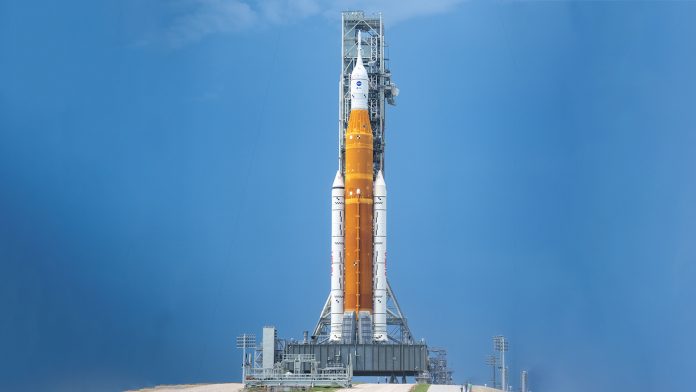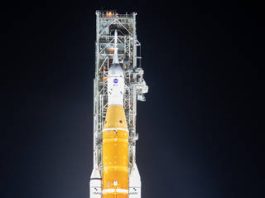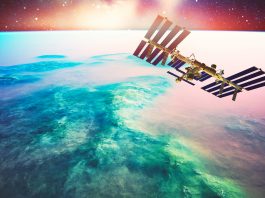As the first of NASA’s Artemis missions to the Moon prepares for launch, Philippe Deloo, Orion European Service Module Program Manager, discusses ESA’s involvement in the mission.
The first in a series of complex NASA missions designed to eventually build a long-term human presence on the Moon, Artemis I is an uncrewed flight test that is hoped to provide a foundation for human deep space exploration. The discoveries from the Moon missions will then be used for the next huge leap of exploration – sending astronauts to Mars.
Formerly known as Exploration Mission-1, Artemis I is the first integrated flight test of NASA’s Deep Space Exploration Systems, comprised of the Orion spacecraft, the Space Launch System (SLS) rocket and the recently upgraded Exploration Ground Systems at the Kennedy Space Center in Cape Canaveral, Florida.
The spacecraft will enter a low-Earth orbit before the rocket’s upper stage fires to take it into a translunar orbit. The spacecraft will then perform a flyby of the Moon, using lunar gravity to gain speed and propel itself 70,000km beyond the Moon, almost 500,000km from Earth. On its return journey, Orion will do another flyby of the Moon before heading back to Earth. The duration of the Artemis-1 trip will depend on the launch date. In a short mission (around 25 days), Orion only does half an orbit around the Moon. However, in a long mission (around 42 days), it will do a 1.5 orbit of the Moon. The mission will end with a splashdown in the Pacific Ocean without the European Service Module – it separates and burns up harmlessly in the atmosphere. The second Artemis mission will have a simplified flight plan with only a flyby of the Moon but with four astronauts. The third Artemis mission will see astronauts taken to the lunar surface.
Initially planned for launch in August 2022, the launch preparation activities have faced some setbacks and the launch date has been pushed back several times. After two failed launch attempts in late August and September due to a suspected engine anomaly and fuelling issues, the launch was delayed further by severe weather conditions caused by the arrival of Hurricane Ian in the Florida area. The launch is now planned to go ahead in November 2022.
Several major organisations have supported NASA in this complex mission. In particular, the European Space Agency (ESA), which developed the European Service Module (ESM) for NASA’s Orion spacecraft. It provides electricity, water, oxygen, and nitrogen, and ensures that the spacecraft remains at the right temperature and on course.
To find out more about ESA’s role in the mission, The Innovation Platform spoke to Philippe Deloo, Orion European Service Module Program Manager at European Space Agency.
What is ESA’s involvement in the Artemis mission?
As a developer and provider of the European Service Module of the Orion vehicle, ESA will support NASA in the mission operation as a member of the Mission Management Team (MMT) for decisions on non-nominal operations and as part of the Mission Evaluation Room (MER) team in charge of monitoring the Orion vehicle performance, assessing anomalies, and recommending the way forward to resolve/work around anomalies to the MMT.
How important is international collaboration for this mission?
ESA’s contribution to the Artemis I mission is crucial. Without the European Service Module (ESM), there is no Orion vehicle, and no Artemis mission is possible. The ESM is the powerhouse of Orion. Without the ESM, Orion is like a car without an engine. Also, the ESA contribution to the mission operation is indispensable, as only the European engineers have full inside understanding of the ESM design in case it is necessary to troubleshoot an anomaly.
The mission has faced criticism regarding the major financial and time investments attached to it. What is the justification for these? Why is the mission so important?
The Artemis programme opens the new era of human exploration of our Solar System beyond the low-Earth orbit. Bringing humans in space further than ever before and in a sustainable way has major challenges in the design and development of the space vehicle. Crew safety requirements, combined with the mass and performance requirements to go beyond low-Earth orbit, necessitated extensive engineering effort to design a vehicle compliant to these requirements. The mission is important because it will allow human exploration of the Solar System. It is an indispensable complement to the robotic missions, which only discover what they are programmed for. Humans are curious and more flexible to discover things we do not foresee or suspect.
Have the issues that have occurred with this launch of the unmanned rocket raised concern for the first crewed flight?
Not at all. On the contrary, it shows that the right processes are in place to identify anomalous behaviour of the hardware and that, at the time of launch, all hardware is ready to perform nominally. This strengthens the confidence that we will need to certify that Artemis II is safe to carry a crew.
What measures are being put in place to prevent further scrub launch attempts and delays to the mission?
The launch criteria of all Artemis flight systems have been reviewed to identify if some are based on unreliable information to avoid stopping the countdown, as was the case in the first launch attempt where the cooling of engine three was believed insufficient because of the reading of an unreliable sensor. It is planned to make a cryo-testing of the repaired quick-disconnect (QD) prior to the next launch attempt to ensure it is leak tight. In terms of the ESM, we do not plan anything specific as it performed well during both countdowns with no anomalies.
Philippe Deloo
Orion European Service Module Program Manager
European Space Agency (ESA)
https://www.esa.int/
https://www.linkedin.com/company/european-space-agency/
https://www.facebook.com/EuropeanSpaceAgency
https://twitter.com/esa
https://www.youtube.com/user/ESA
Please note, this article will also appear in the twelfth edition of our quarterly publication.









